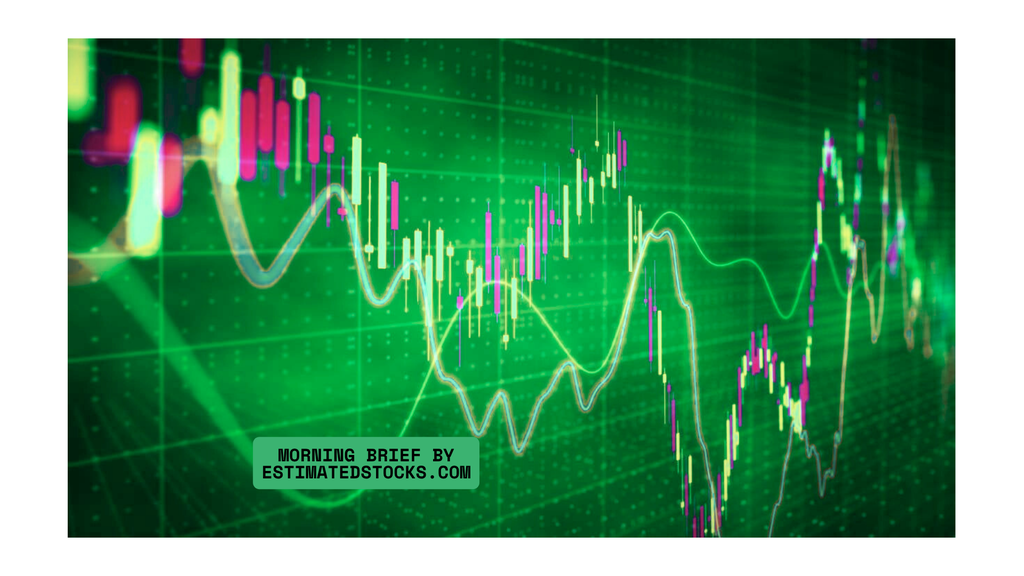
Explore China's stock market rally, Europe's EV transition, and the global impact on investors navigating government policies, market sentiment, and economic trends.
China's stock market is experiencing a historic rally, creating waves of excitement among investors globally. At the same time, electric vehicle (EV) manufacturers, particularly in Europe, are urging policymakers to stay on course with plans to phase out combustion-engine cars by 2035. This dual scenario of market recovery in China and regulatory shifts in Europe holds significant implications for investors and businesses, particularly in sectors like automotive and technology.
China's Stock Market Surge
In recent sessions, Chinese stocks have seen a remarkable recovery, sparking discussions about whether this rally is sustainable or a short-term response to government interventions. The CSI 300 Index, which tracks the top 300 stocks on the Shanghai and Shenzhen exchanges, has gained as much as 6.5%, marking its biggest surge since 2015. This dramatic increase comes after a prolonged decline, where the index lost over 45% of its value since reaching a peak in 2021.
Investors have responded enthusiastically to signals from the Chinese government, which has introduced several measures aimed at stabilizing the economy. These include fiscal policies, monetary easing, and stimulus packages designed to revive growth in critical industries like real estate, infrastructure, and manufacturing. The timing of this rally, just before a major holiday in China, suggests that investors are optimistic about the impact of these policies, at least in the short term.
Sentiment Analysis and Market Movements
This resurgence in Chinese stocks is notable for several reasons. Firstly, it reflects a shift in investor sentiment, driven by expectations of further government stimulus. Market participants have been closely monitoring China’s actions, particularly as the nation grapples with slower economic growth. This slowdown had initially caused concern, leading to a steep selloff in Chinese equities. However, recent moves by the government seem to have restored confidence among traders, leading to a flurry of buying activity.
Another factor influencing the market is the performance of key sectors like metals. Iron ore, for example, has seen significant price gains, fueled by optimism about renewed demand from Chinese infrastructure projects. In contrast, Japanese stocks have fallen, partly due to political developments, as investors had anticipated more monetary stimulus from Japan's central bank.
Despite this rally, some analysts remain cautious. Certain investment officers and financial experts have expressed skepticism about the longevity of the Chinese stock market's recovery. They argue that the current wave of optimism might not translate into a sustainable long-term trend. One notable viewpoint is that while government stimulus can provide a short-term boost, it may not be enough to counteract deeper structural issues within China's economy.
Impact on US-Listed Chinese Stocks
The rally in China has also had a ripple effect on US-listed Chinese stocks, particularly large-cap companies. Stocks of major Chinese firms listed on US exchanges, such as those in the technology and automotive sectors, have seen a resurgence in line with the broader market in China. These companies, which had been under pressure due to regulatory crackdowns and slowing economic growth, are now benefiting from renewed investor interest.
However, this resurgence comes with a note of caution. Investors remain wary of potential regulatory changes both in China and the US, which could impact the future performance of these stocks. For instance, the geopolitical tension between the two nations and the ongoing scrutiny of Chinese companies listed abroad continue to pose risks. Additionally, the broader economic environment, particularly the slowdown in global demand, may affect the long-term growth prospects of these firms.
EV Stocks and the European Regulatory Landscape
Meanwhile, in Europe, the electric vehicle sector is facing its own set of challenges. European policymakers are moving ahead with plans to phase out sales of new combustion-engine cars by 2035. This ambitious goal, which is part of the European Union's broader efforts to reduce carbon emissions, has received support from a coalition of car manufacturers, led by companies like Volvo. These manufacturers argue that maintaining the 2035 target is crucial for the industry to remain competitive and meet the EU’s environmental goals.
However, not all automakers are on board. Some of the largest car manufacturers in Europe have remained silent on the issue, reflecting the complexity of the situation. The shift toward electric vehicles has not been without its challenges, with automakers facing declining sales of EVs in recent months. In fact, some companies, including Volkswagen, are considering closing factories due to weaker demand for electric cars.
The automotive sector’s lobby groups have also raised concerns about the financial impact of stringent emissions targets. Missing the EU’s 2025 carbon reduction goals could result in hefty fines for automakers, adding to the pressure they are already facing from the transition to electric vehicles.
Broader Implications for Global Markets
The developments in China and Europe have broader implications for global markets, particularly in the US and Europe. For one, the rally in Chinese stocks, especially in the EV sector, could influence the performance of other global EV stocks. Chinese electric vehicle manufacturers like Nio and Xpeng, which are also listed in the US, may see their stock prices rise in tandem with the broader market recovery in China. This could provide a much-needed boost to the EV sector globally, which has been grappling with production and supply chain issues over the past year.
On the flip side, the challenges faced by European automakers highlight the difficulties involved in transitioning to a greener economy. While the 2035 deadline for phasing out combustion-engine cars is seen as necessary for meeting climate targets, it also presents significant hurdles for car manufacturers. The cost of ramping up EV production, coupled with the risk of declining demand, has left some companies in a precarious position.
From an economic standpoint, these trends point to a period of uncertainty for both China and Europe. In China, while the government’s stimulus efforts have provided a temporary boost to the stock market, questions remain about the sustainability of this recovery. A prolonged slowdown in domestic growth could have far-reaching consequences, not just for China but for global markets that depend on Chinese demand for goods and services.
In Europe, the focus on reducing emissions and transitioning to electric vehicles is reshaping the automotive industry. The success of this transition will depend largely on the ability of manufacturers to adapt to new regulations and consumer preferences. A failure to meet emissions targets or to produce affordable and reliable electric vehicles could have significant economic repercussions, particularly in countries where the automotive industry plays a crucial role in the economy.
Author's Analysis
The recent market developments in China and Europe reveal a deeper narrative about the relationship between government policy, investor confidence, and economic realities. China's stock market rally, largely fueled by government stimulus, offers optimism for a potential economic rebound. However, questions surrounding the long-term sustainability of this surge remain, as fundamental issues in the economy could still pose significant risks.
In Europe, the transition towards electric vehicles is a pivotal shift that will have wide-ranging effects on the automotive industry. As governments push for stricter emissions regulations and phase out combustion-engine vehicles, manufacturers are facing both opportunities and challenges. This transition will not only reshape the industry but also force investors and policymakers to reconsider the economics of transportation and energy.
For investors globally, these trends underscore the need for vigilance in monitoring macroeconomic conditions and sector-specific dynamics. While sectors such as electric vehicles and technology present promising growth opportunities, the inherent risks related to regulatory changes, market sentiment, and economic uncertainty should not be overlooked. The ability to navigate these complexities will be crucial for long-term investment success.
If you want to read more about the US stock market outlook, click here.
Disclaimer:
The information provided in this article is for educational purposes only and should not be construed as investment advice. estima...
Author
The Editorial Team at estimatedstocks.com is a dedicated group of financial market analysts, researchers, and writers committed to providing accurate, timely, and insightful content for investors and financial enthusiasts. With a deep understanding of global markets, macroeconomic trends, and investment strategies, the team at estimatedstocks.com ensures that readers are well-informed to make smart financial decisions. Our editorial team specializes in analyzing stock performance, market trends, and economic indicators, offering expert commentary and in-depth reports on the ever-evolving world of finance. We aim to bridge the gap between complex financial data and practical investment insights, making the markets accessible to everyone—from seasoned investors to those just starting their financial journey. At estimatedstocks.com, our content is driven by thorough research, critical analysis, and a commitment to delivering objective, fact-based reports. Whether it’s stock market forecasts, company earnings reviews, or sector-specific deep dives, the Editorial Team is focused on helping our audience navigate the financial landscape with confidence. Our mission is to empower investors by providing them with the tools and knowledge to make informed decisions in an unpredictable market.


